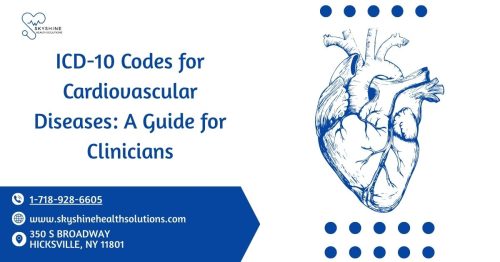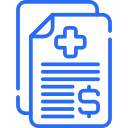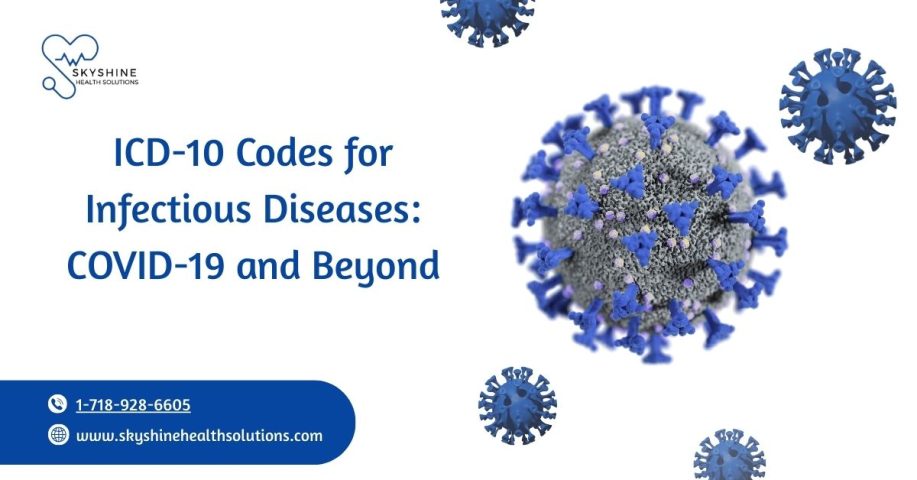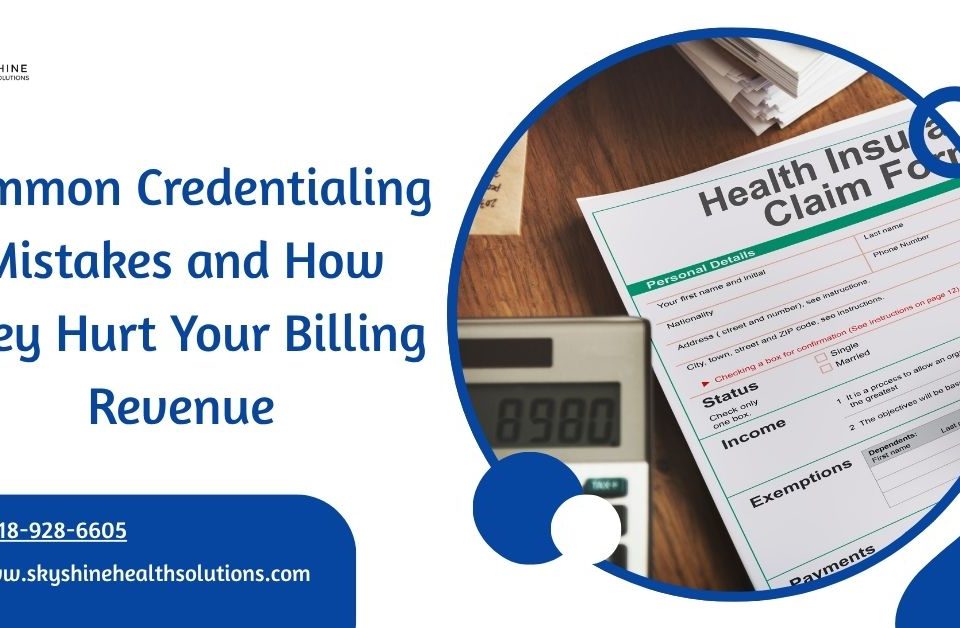
ICD-10 Codes for Diabetes: Coding Tips for Type 1 and Type 2
August 18, 2025
ICD-10 Coding for Respiratory Diseases: Complete Guide
September 3, 2025Working on ICD-10 codes for infectious diseases can feel like a puzzle, but if done right, will be helpful in entire billing process. Infectious diseases are a major focus in healthcare, impacting millions worldwide. Accurate coding ensures insurance claims succeed. Any mistakes can lead to rejected claims, false disease data, or even compliance issues. The A00-B99 chapter, along with specific codes like U07.1 for COVID-19, helps documenting these conditions clearly. Mastering this chapter and related codes is a must for clinicians and coders to capture the full scope of these conditions and their impact on patients. This guide breaks down essential codes, shares practical tips, and helps you avoid common mistakes to stay compliant with CMS and HIPAA regulations.
Important Codes for Infectious Diseases
Here’s a rundown of some critical codes for infectious diseases, focusing on COVID-19 and other common conditions:
-
-
-
U07.1: is for Confirmed COVID-19 diagnosis via laboratory testing.
-
A41.9: Represent Sepsis, when the cause isn’t identified.
-
B20: show Human immunodeficiency virus (HIV) disease, covering symptomatic cases.
-
A54.9: show Gonococcal infection, unspecified, for cases like gonorrhea without a specified site.
-
A15.0: show Tuberculosis of lung, confirmed by sputum microscopy.
-
A18.4: show Tuberculosis of skin and subcutaneous tissue.
-
B18.2: show Chronic viral hepatitis C.
-
B16.9: show Acute hepatitis B without delta-agent and without hepatic coma.
-
J09.X2: represents Influenza due to identified new influenza A virus with pneumonia.
-
J11.1: represents Influenza due to unidentified influenza virus with other breathing difficulties.
-
-
Tips for Accurate Coding
To insure a smooth billing process, follow these practical strategies:
-
-
Document the exact infection, its site, and any complications. For example, note “MRSA sepsis” instead of just “sepsis” to justify A41.02.
-
Link infections to their effects, like HIV with Kaposi’s sarcoma (C46.0) or COVID-19 with respiratory failure (J96.0).
-
Rely on lab results, such as PCR tests for COVID-19, to confirm diagnoses and support codes like U07.1.
-
CMS updates ICD-10 codes annually, often adding new ones for emerging diseases. Check for updates to avoid outdated coding.
-
Work closely with your coding team to ensure your notes provide enough detail to support the chosen codes, minimizing claim denials.
-
Include related conditions, like diabetes (E11.9) or smoking (Z72.0), that impact infection management.
-
Common Coding Mistakes
Coding infectious diseases can be tricky. Here are common mistakes and how to fix them:
-
-
Using vague terms like “infection” without specifics.
-
Fix: Use lab results or clinical findings to identify the organism and select precise codes, like A49.9 for unspecified bacterial infections only as a last resort.
-
-
Overlooking symptoms or complications, such as missing respiratory failure in COVID-19 cases.
-
Fix: Document all related conditions, like shortness of breath or fever, to justify additional codes (e.g., R06.02 for dyspnea).
-
-
Failing to code underlying conditions, like diabetes (E11.9) in a patient with sepsis.
-
Fix: Include comorbidities in your notes to provide a complete clinical picture.
-
-
Missing symptoms or complications, like pneumonia in influenza cases.
-
Fix: Document all related symptoms, such as fever (R50.9) or shortness of breath (R06.02), to support additional codes.
-
-
Imagine a patient with confirmed COVID-19 and severe pneumonia. Instead of coding just U07.1, document the pneumonia (J12.82) and any respiratory failure (J96.0). If the patient has diabetes (E11.9), include that too. This detailed approach ensures accurate billing and supports tailored treatment, like oxygen therapy or antivirals.
Helping Patients and Communities
Mastering ICD-10 codes for infectious diseases makes a real difference in billing accuracy, patient care, and public health. Accurate ICD-10 coding does more than just keep the billing process smooth. For example, coding U07.1 with J12.82 for COVID-19 pneumonia helps specialists tailor treatments, like oxygen therapy or antivirals, and ensures hospitals are repaid for resources used. By focusing on clear, detailed documentation, staying updated on code changes, and partnering with coders, you can tackle the A00-B99 chapter with confidence. It can transform patient care and public health. Start sharpening your documentation habits today to keep things compliant and make a positive impact.

Visit our related blog on ICD-10 Codes for Cardiovascular Diseases: A Guide for Clinicians
Learn from Reviews how we are changing lives.















